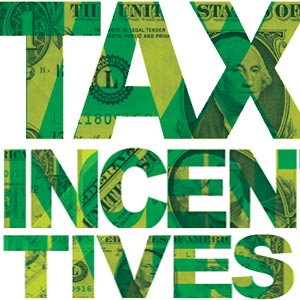The most glaring problem about PILOT tax breaks is that it is a massive wealth transfer – from the people in one of the cities and counties with the highest poverty rates to the stockholders of major companies generally headed up by White men.
It’s a reality that calls for equity measurements to become a central part of the evaluations by the nine agencies approving PILOT tax breaks.
It’s likely that economic development officials will express skepticism that it can be done. And yet, other places are already doing it.
Indianapolis has an “inclusive incentive scoreboard” on which tax incentives are based. It requires $18 an hour wages and that a company must spend 5% of its tax savings on transit, workforce training, or child care for employees.
Pittsburg has custom equity indicators that tie incentive policies to the city’s needs. Columbus (OH), Fort Worth, and Cincinnati extend tax breaks to affordable housing. Austin (TX) requires that no program can exist for more than five years with the approval of its City Council.
That said, if there is any community in America that should incorporate these kinds of equity policies into its PILOT policies, surely it is ours.
Wanting Educated Workers and Taking Away Money For Them
We treat $15 an hour like it’s a living wage although it’s not. 42% of African American workers earn less than $15 an hour. Median incomes for zip codes near downtown are as low as $11,410 year and in at least six more, incomes are less than $15,500 a year.
We ignore the imperative for equity in PILOTs at our own risks. These damning statistics are not getting better and are essentially stagnant, which in itself is an indictment of the 40 years of PILOTs that Memphis and Shelby County have given out.
Put simply, economic development tools like tax breaks can promote both racial equity and economic growth; however, they too often enrich large, wealthy corporations and politically connected individuals.
The lack of an emphasis on equity in Shelby County is demonstrated more dramatically by the fact when PILOTs are approved and taxes are waived, they take approximately $18 million a year from school districts. Instead, companies that complain that Memphis needs more skilled workers while they take money from schools crucial to creating that very workforce.
As PILOT policies here come under scrutiny in the review under way in a committee of Shelby County Board of Commissioners, it is a good time should consider the impact from this lost tax revenues on public services and also consider ways that incentives can be strategically implemented to support equity goals, inclusive growth, and the fiscal health of city and county governments.
They are doing this in other cities and counties and it’s hard to understand why it can’t be done here. Some are tracking and measuring business behaviors and inequities because that allows for their communities to better judge how (and if) these nine agencies granting PILOTs are resulting in more equitable, inclusive growth.
Inclusive Growth Priorities
The tradition of PILOTs has been to reward a company for creating jobs or investing in downtown apartments and businesses. Only in recent years in other cities have factors like per capita income, local hiring, and affordable housing been added to the formulas for determining the length of the tax break.
For Brookings, there are four inclusive growth priorities:
- Invest in people and skills because skills development can improve residents’ capacities that support meaningful work and wages.
- Focus on advanced industries because they can build local comparative advantage and deliver innovation and wage gains.
- Connect places so work at multiple levels connect communities to regional jobs, housing, and opportunity.
- Boost trade through export growth and trade with other markets can deepen regional industry specialization and bring in new income and investment.
We’ve Been Here Before
These are not new ideas for Memphis.
After all, in 2019, after Brookings worked for years with Memphis Tomorrow, City and County mayors, EDGE, University of Memphis, and business leader, the Memphis Shelby County Regional Economic Development Plan was created which just happens to embrace these principles for our community. That report followed one six years earlier, A Roadmap for Transforming the Memphis Economy, that was developed by the same cast of characters.
Here’s the thing: shelves in Memphis are filled with economic development plans like these. What is missing is evidence of follow-up that shows how they were translated into actions. Too often, in Memphis and Shelby County, it seems that the plan is the outcome rather than actions that should flow from it.
In a commentary three years ago, Brookings also suggested four areas of business behaviors that should be included in an inclusive incentives scorecard that better align economic development policies to drive inclusive growth.
They are:
- Good job creation (living wages/benefits)
- Skills training and workforce development
- Job access and sustainability (e.g., businesses located in transit-accessible locations)
- Business ownership and governance (e.g., diversity, equity, and inclusion practices)
These are principles that should have a place in the matrix that is used to score a PILOT request and determine the length of the tax break. Rather, today, it seems that we take a shotgun approach – “all jobs are good jobs” – while cities like Indianapolis are targeting incentives at “opportunity industries” and anchoring its business incentives in priorities such as growing the economy, assisting distressed geographies, and improving access to jobs through training, transit and child care.
Ellen Harpel’s Metrics
Ellen Harpel of Smart Incentives says that the old way of measuring the metrics for tax incentives by job creation and new investment is no longer enough. “New metrics are needed to help tell the story of how business incentives support the economic development mission and ensure that economic development activities benefit people, businesses, and places,” she wrote, adding that metrics must be people-based, place-based, and business-based.
People-based metrics include workforce development that tracks the number of individuals engaged in training programs, the earnings of participants, credential attainment, measurable skill gains, and job placement and retention; job quality that evaluate benefits, hours and scheduling, worker voice and autonomy, job security, working conditions, and skill and career advancement; equity and inclusion measure the participation of underrepresented populations and geographies in economic activities; and long-term impact programs track long-term outcomes, such as percentage of affected households reaching a sustainable income threshold or other metrics that reflect lasting economic well-being.
Place-based Metrics include infrastructure development such as broadband; regional governance assesses the establishment and effectiveness of regional governance structures and collective action; community engagement are metrics that capture company collaboration with local workforce service and training and identifying where the community voice is incorporated into decision-making.
Business-based Metrics include innovation and technology adoption that helps businesses adopt new technologies and enter new markets, patents and research and R&D, participation in acceleration programs, technology collaborations, and commercialized research; business formation and growth that encourages new business growth and entrepreneurial activity with metrics that reflect the ability to foster a dynamic business environment with new business growth, private investment attracted, business revenue growth, number of new markets, firm survival rates, and number of high-growth firms; business assistance is how a community prepares for the next generation economy with assistance with cybersecurity and technology adoption and participation in industry ecosystem programs; and global competitiveness measures foreign direct investment, exports, and participation in international markets.
Making Equity Central to PILOTs
In other words, alternative metrics that include equity are better at painting a comprehensive view of how PILOTs affect the lives of people, the vitality of businesses, and the prosperity of our city and county. At the center of improved PILOTs is equity measurements which shows if the tax breaks are improving the baseline for everyone in Memphis and Shelby County and indicating whether people are better off as a result of PILOT tax break programs.
In other words, equity is not something tacked onto planning and onto PILOTs. Equity can’t just be a talking point for economic development officials.
It is central to programs, metrics, and policies. It is past time to treat it that way.
***
Join us at the Smart City Memphis Facebook page for daily articles, reports, and commentaries relevant to Memphis and the conversations that begin here.






PILOTs represent corporate welfare at its most naked. That said, we would need to take an eyes-wide-open approach to both the benefit of our existing PILOT program (or lack thereof) and the risks associated with its much needed overhaul.
I’m not fully convinced that we could expect job creation to continue or the quality of aplicants to rapidy improve in the near-term simply by changing the metrics. Logistics operations will not suddenly offer to match income and equity targets to be in Memphis proper when access to local and regional transportation assets would be virtually unchanged across local jurisdiction lines. We have not been beset with an influx of PILOT applications related to would-be moderate to high-skill and corresponding high income employers. I’m even less confident when I think it’s reasonable to assume some adjoining jurisdictions will likely move to take advantage of a discrepancy in incentive metrics, no matter how justified and deserved the metrics are.
Too many significant proposed investments led by experienced developers have failed to ever break ground despite awards of significant PILOTs and other incentives. Or once they did, were so reduced in scale and impact as to be unrecognizable. This in the face of not only PILOTs, but high occupancy rates, resilient demand, a relatively strong economy, an extended period of ‘easy’ money, an unprecedented increase in local rental rates, and a general sense of optimism in their surrounding neighborhoods.
Of course, none of this justifies continuing with business as usual. We know we’re “damned if we do”. There is no reason to not change how we do business to at least explore whether we are “damned if we don’t”.
It’s seemed strange that we have to give PILOTs to TDL companies if in fact we do actually have the world-class infrastructure for that industry that we claim. As long as we act on the premise that any job is a good job, we are not actually negotiating tax breaks because our reputation precedes us.
Meanwhile, the majority of research conclude companies do not make location decisions based on tax breaks; however, even if they do, we seem to be negotiating against ourselves by acting that PILOTs are the only perks for locating here when we have low cost of living, discounted water prices and lowered electricity rates.
I agree with you about economic challenges but I’ve never seen any economic development officials swerve from genuflecting to PILOTs long enough to evaluate the business behaviors under way.
Thanks for the thoughtful comments, as usual